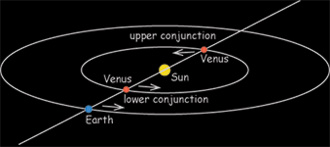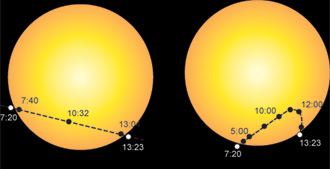
Observing the Transit
Since apparent diameter of Venus is nearly 1 arc-minute, it should e possible to see without optical magnification (but using solar filter protection) as it crosses the Sun. Nevertheless, the planet appears to be only 1/32 of the Sunīs apparent diameter so a pair of binoculars or a small telescope at modest power will offer a much more satisfying view. Naturally, all binoculars and telescopes must be suitably equipped with adequate filtration to ensuer safe solar viewing. The visual a photographic requirement for observing a transit are identical to those for solar viewing. Amateurs can make a scientific contribution by timing the four contacts at ingress and egress. Observing techniques and equipment are similar to those used for lunar occultations. Since poor seeing often increases the uncertainty in contacts timings, an estimate of the possible error associated with each timing should be included. Transist timings and geographic coordinates of the observing site (measured with a topographic map or GPS receiver) should be sent to: A.L.P.O.Mercury/Venus Transit Section. 